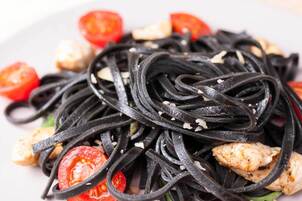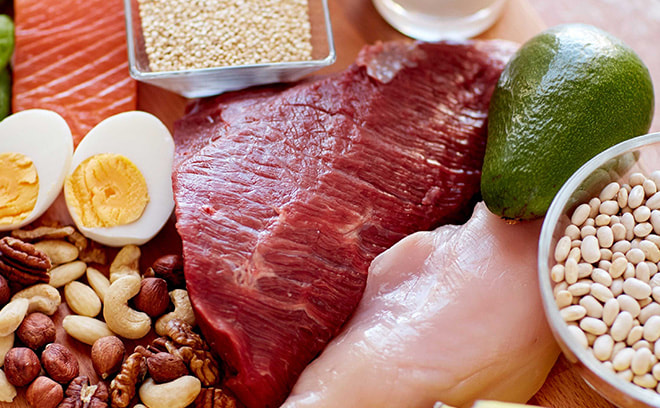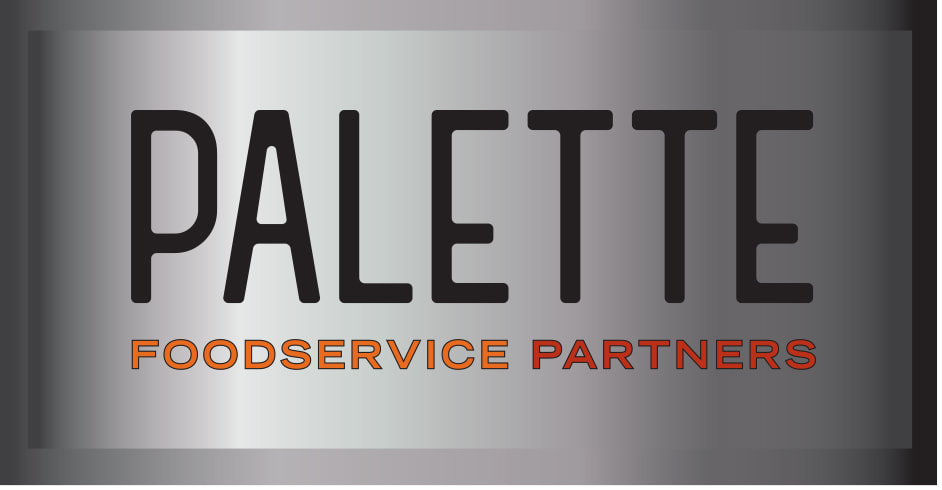 You’re no doubt scrutinizing your menu amid ongoing inflation and supply shortages – and animal proteins, which are among the higher-priced foods that consumers and restaurant operators alike are paying for right now, are a key target for reinvention. Consumers are buying less meat at the grocery store due to higher prices and won’t be surprised to see more expensive meat (or fewer beef options) on the menu at the moment. So what’s the best alternative course of action? In addition to pork, which should continue to be a value option, poultry is likely to be a viable choice in the coming months. According to research from BTIG, poultry is due to see substantial deflation in the first quarter of 2023, even as beef prices are poised to continue their climb. In the meantime, while plant-based proteins continue to have an important place at the center of the plate, plant-based beef sales have dipped. (At a time when restaurant meals may be harder to justify, consumers may be more inclined to splurge on the experience of a beef burger over a plant-based one.) Restaurants may benefit by being extra purposeful with the beef-based options on the menu so they feel more experiential. Feature premium cuts as specials. Get creative with less expensive cuts by using them in flavorful marinades featuring on-trend spices. Offer slow-cooked beef to elevate the melt-in-your-mouth experience that helps you make the most of the beef you’re able to buy right now.  Whether you’re serving more animal- or plant-based proteins these days, consumers are embracing spices to kick up the interest of these foods. According to Food Engineering Magazine, nearly half of consumers say seasonings weigh heavily on their decision to purchase a certain protein – and spicy flavors including harissa, chimichurri and Cajun, along with smoky flavors like hickory, mesquite, oak and alder, are winning fans. Fortunately, the rubs and marinades you use to enhance the experience of a dish also offer the timely benefit of helping you stretch your pantry without a need for more real estate.  As current economic conditions make it critical for restaurants to do as much as possible with fewer resources, it can feel like an impossible task to have to innovate. Yet, innovation is a critical reason consumers eat at restaurants: According to Technomic research, consumers order new or unique items from restaurants 25 percent of the time. At a session of the recent National Restaurant Association Show, experts weighed in on how to maximize menu innovation efforts when operators are feeling stretched thin. It comes down to five P’s: pivots, preparation, proteins (and plants), personalization and predictions. Combining existing ingredients in new ways is an easy pivot that can refresh a menu. Your preparation of a dish can also transform it: consider charring or pickling vegetables to inject new flavor into your menu, or freezing a cocktail to give it a slushy texture. As animal proteins have become difficult to source, chefs have had to get creative with new cuts of meat – and also with plant proteins at the center of the plate. Now is an ideal time to experiment with more plant-forward entrées. When a consumer knows they can order something just the way they like it, you can win their loyalty, so consider how you can make your menu feel more personalized by offering a choice of condiments, sides and/or grains. Finally, weave in some of the year’s trend predictions. You can be on-trend but not trendy by taking an ingredient on the rise in menus – even something as simple as a seasoned salt or a spice – and adding it to your food and beverage menu in new ways.  Consumers are eager to eat alternative proteins. The research firm NPD group found that in April 2021, shipments of alternative protein products from food service distributors to commercial restaurants had climbed by 60 percent year-over-year. Further, a report released in January from The Good Food Institute predicted there would be continued diversification of alternative protein sources in the months ahead. As consumers and restaurants seek out more sustainable sources of nutrients, how far are you stretching the boundaries of what protein looks like on your menu? In addition to substitutes for animal protein, think about naturally plant-based sources including beans, seeds, grains and fortified pastas. Using a range of global seasonings on your menu can provide a couple of important benefits: It can help you reinvent a protein or an entire dish while keeping your inventory simple – and in doing so, it can add the kind of variety and frequent change to your menu that will keep guests interested. Take one of the proteins or starches you have as an inventory staple and consider how you might transform it in multiple ways with the help of global flavors. Your menu can act as a passport – the only one your guests are likely to be using right now.
If you’re looking to appeal to flexitarians and offer a strong gateway to the plant-based foods on your menu, chicken can serve you well. Not only is it a lean protein that can benefit a person’s muscles, bones, mood and cardiovascular health, but it can also be seasoned and prepared in many of the same ways as the vegetables on your menu, making it easy to create different variations on a single dish.
How can you best protect your business from future spikes in COVID-19? Recent research from Technomic found that operators are looking for manufacturers and distributors to offer support in managing current product shortages – and how best to stock up on ingredients if future outbreaks occur. More than three-fifths of restaurant operators are reporting product shortages, mainly in animal proteins, which is leading them to consider choosing frozen over fresh product. Just over half of operators said there were likely to switch to frozen beef, for example. Beyond that, there may be opportunity to secure longer payment terms and more flexible delivery schedules as product shortages persist.
 It’s hard to deny the growing mainstream appeal of plant-based foods. The grocery store giant Kroger recently announced it was launching Simple Truth Plant Based, its own line of plant-based burgers and sausages, as a generic alternative to premium plant-based brands. Impossible Foods has won celebrity endorsements from the likes of Jay Z, Serena Williams and Katy Perry. You’re likely experimenting with more plant-based options on your menu. But could you default to vegetables? The University of Cambridge may offer a glimpse into what that might look like for you. Hospitality and Catering News reports that the university’s catering service, which operates 14 outlets and manages more than 1,500 hospitality events each year, removed all beef and lamb from its menus in 2016, replacing those items with plant-based options as part of a new Sustainable Food Policy. In making the changes, the university set out to reduce its consumption of meat, improve and increase the availability of plant-based options, remove unsustainable fish from its menus and reduce food waste. In the process, the university catering service trained its chefs in vegan cooking and its café managers in marketing for sustainability as opposed to profit. In the years since the university implemented its Sustainable Food Policy, it has been able to share dramatic effects with its guests. Despite a rise in how much food the university purchased, overall carbon emissions across the university catering service have dropped by 10.5 percent, according to the report. Further, there was a 33 percent reduction in carbon emissions per kilogram of food purchased and a 28 percent reduction in land use per kilogram of food purchased. Finally, even though food costs have increased since the university launched its policy, its gross profits have increased by 2 percent. What are the holidays without comfort food? If you’re looking for something that brings savory and slightly sweet tastes to your breakfast menu, consider the sausage kolache (or klobasnek, according to its Czech roots). A mainstay in parts of Texas, the sausage kolache is a pillowy, mildly sweet dough filled with sausage and cheese. In the Czech Republic, kolaches can be filled with various combinations of fruit, cheese and other ingredients.
Imagine your favorite protein. Chances are, there is a plant-based, or partially plant-based, alternative to it – and thanks to food technology, most of the up-and-coming options don’t require guests to sacrifice on taste. The Spoon reports that some of the latest additions to the plant-based protein world include Tyson’s Raised & Rooted meat-free chicken nuggets (the company’s half-plant, half beef burgers are next in the pipeline), and plant-based corned beef, which is being served up in sandwiches at select Quizno’s locations in Denver. In the ever-expanding plant-based milk category, Oatly’s parent company recently filed a patent for a quinoa-based option. Finally, at a time when seafood sustainability is of growing concern to operators and guests alike, there is great opportunity for plant-based fish right now – watch for tastes to improve in this category in the coming months.
|
Subscribe to our newsletterArchives
April 2024
Categories
All
|









 RSS Feed
RSS Feed